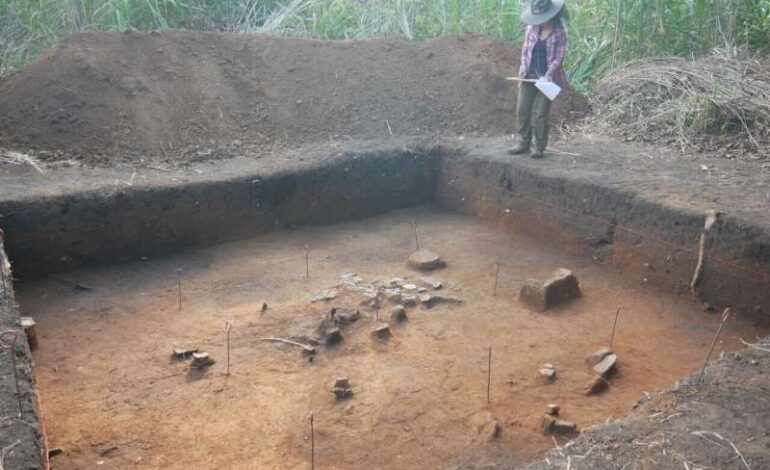Indigenous Peoples Flourished in Southwestern Amazon for Over 1,000 Years

Recent research highlights a profound history of Indigenous peoples thriving in the southwestern Amazon for over 1,000 years. A multidisciplinary expedition in September 2021 explored the Great Tectonic Lakes of Exaltación in Bolivia, revealing significant archaeological evidence of human adaptation and innovation in this ecologically rich region.
Uncovering a Living Archive
The expedition, organized by the Grupo de Trabajo para los Llanos de Moxos (GTLM), involved researchers from various esteemed organizations, including the Wildlife Conservation Society and the National Museum of Natural History. The focus was on the tectonic lakes, specifically Lakes Rogaguado and Ginebra, which are part of the Río Yata Ramsar wetland complex, recognized by UNESCO for its ecological and cultural importance.
Underneath the grasslands and shallow waters of these lakes lie monumental earthworks, raised fields, and intricate canal systems, all indicative of centuries of human-environment interaction. Evidence from archaeological sites such as Paquío, Coquinal, Isla del Tesoro, and Jasschaja provides insight into the long history of settlement and adaptation in this area.
Research published in Frontiers in Environmental Archaeology reveals that these sites were occupied from approximately 600 to 1400 CE. At Paquío, the initial phase of settlement around 600 CE transitioned to a more intensive occupation between 1000 and 1200 CE, characterized by shell middens and complex canal networks linked to maize cultivation.
Ecological Insights and Cultural Heritage
Excavations at Jasschaja, dated to 1300 to 1400 CE, indicate broader landscape transformations and increased plant diversity, showcasing advanced forest and crop management practices. The engineering of drainage canals and raised fields illustrates a sophisticated understanding of the seasonal floods that characterize the region, demonstrating centuries of local experimentation.
Archaeological findings reveal a diverse pre-Hispanic diet, consisting of fish such as wolf fish and peacock bass, alongside reptiles and mammals. Evidence of cultivated plants, including various palm species and legumes, indicates a mixed economy combining fishing, hunting, gathering, and agriculture.
The contemporary Cayubaba and Movima communities continue to inhabit these landscapes, maintaining a unique biocultural heritage. Their knowledge and practices reflect centuries of interaction with the environment, underscoring a deep cultural history interwoven with exceptional biodiversity.
During the post-COVID-19 field seasons, collaboration between researchers and Indigenous representatives was grounded in respect and dialogue. The Cayubaba Indigenous Council guided access to culturally significant sites, ensuring that research aligned with community priorities while fostering a broader understanding of the region’s heritage.
This ongoing collaboration emphasizes the importance of integrating archaeological and ecological research with conservation efforts, highlighting that the Llanos de Moxos is not only a biodiversity hotspot but also a landscape profoundly shaped by human history.
As threats such as deforestation and climate change loom over the Amazon, the lessons derived from the landscapes of Lakes Rogaguado and Ginebra offer valuable insights into sustainable practices. The archaeological evidence points to long-standing traditions of diversified livelihoods that harmonized farming, fishing, and resource management.
The legacy of these ancient societies challenges contemporary views on development and sustainability, reminding us that resilience often emerges from diversity. Protecting this biocultural heritage is a global responsibility, as the wetlands continue to play a crucial role in carbon storage and biodiversity conservation.
Ultimately, the study of these landscapes transforms archaeology from a mere exploration of the past into a vital connection to current conversations on sustainability and ecological justice. The history embedded in the Llanos de Moxos reveals a dynamic, inhabited landscape that continues to influence our shared future.
For further information, refer to the research article titled “Historic landscapes, diversified livelihoods in the southwestern Amazon: The case of Lake Rogaguado and Lake Ginebra (Bolivia),” published in Frontiers in Environmental Archaeology.






